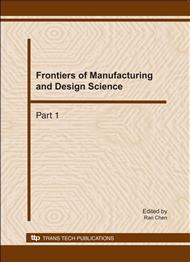p.2805
p.2809
p.2814
p.2818
p.2822
p.2827
p.2832
p.2837
p.2842
Research on Unwinding Tension System Control Based on Inverse System Theory
Abstract:
In the printing process, it mainly depends on the stability of systematic tension control to ensure the quality of print. Meanwhile, systematic tension is mainly created from unwinding section, from which it is easy to cause fluctuation and variation of tension. Hence, how to maintain the stability of the tension in unwinding system has become a key problem to tension control system. Unwinding system is a typical multi-input-multi-output, nonlinear and strong coupling system. It is difficult to control with the traditional design method. In this paper, we realize the system’s decoupling and linearization based on the inverse system theory, which make the system change from a coupled and nonlinear system to two order pseudo-linear systems after a series of control variable transformations. We introduce active-damping into the pseudo-linear system to overcome the zero-damping and enhance the ability of disturbance-resist. On the basis of these, a PID controller is designed for the unwinding tension control system. Though simulation and analysis, it shows that the proposed strategy of inverse system decoupling control can achieve the decoupling unwinding control system, and the PID controller which is designed after introducing the active-damping makes the system get an ideal control effect.
Info:
Periodical:
Pages:
2822-2826
Citation:
Online since:
December 2010
Authors:
Keywords:
Price:
Сopyright:
© 2011 Trans Tech Publications Ltd. All Rights Reserved
Share:
Citation:


